There are a number of reasons why your cherished vinyl may be warped, but you’re probably more interested in the cure. Luckily for you we have this guide on how to fix warped records!

Can You Fix Warped Vinyl Records?
In a word and for the most part, the answer is yes.
But fixing a warped record satisfactorily will depend on the amount and type of damage.
Is the warp a gradual distortion across a large portion of record’s surface, or is it a tight ripple from the center to the edge?
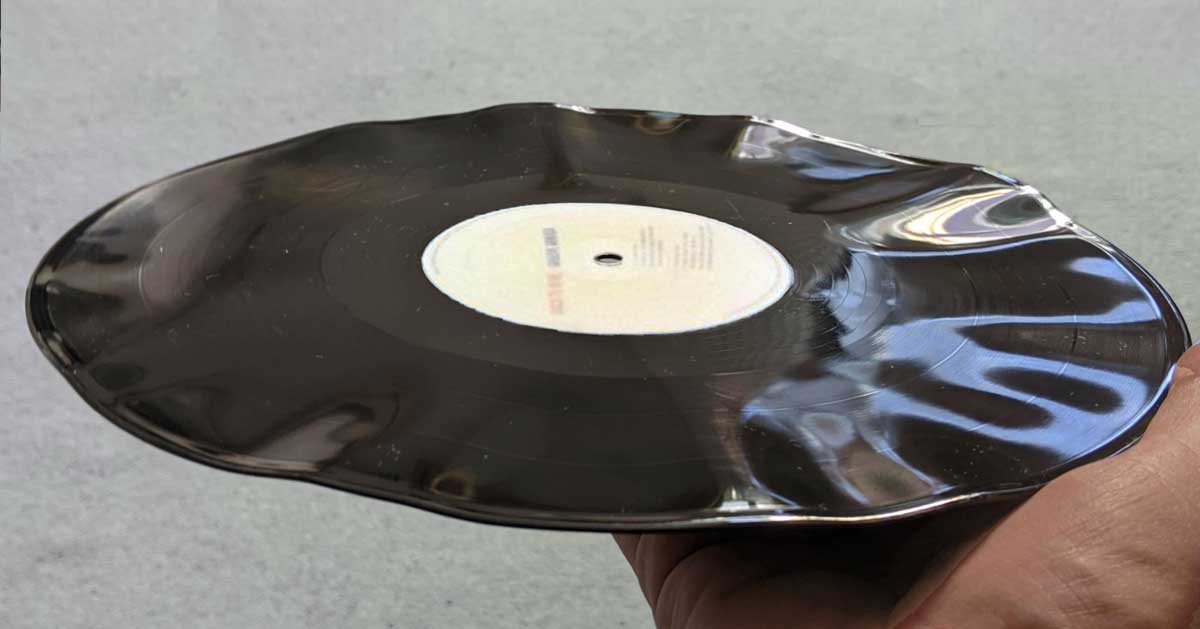
Like anything that gets distorted from its original condition, restoring a vinyl record to a perfectly flat state can be a challenge – and will have various degrees of success.
For example, if you’ve ever bent something – even something as simple as a piece of paper, then tried to bend it back, you’ll always see evidence of the change.
Therefor, you should be realistic: be prepared to be satisfied with results that range anywhere from “acceptable” to “I’m pretty happy with that”.

How to Fix Warped Vinyl
1. Fix Warped Records with Pressure
To fix a warped vinyl record, sandwich the record between 2 heavy objects, like a couple large books, and let it sit for a few days or weeks until it’s not warped anymore. If you’re in a rush, you can quickly fix a warped vinyl record using an oven.
Use Pressure and Time to Fix a Warped Record
The safest way to unwarp a record is also the most time consuming. We’re talking days or weeks, not minutes or hours.
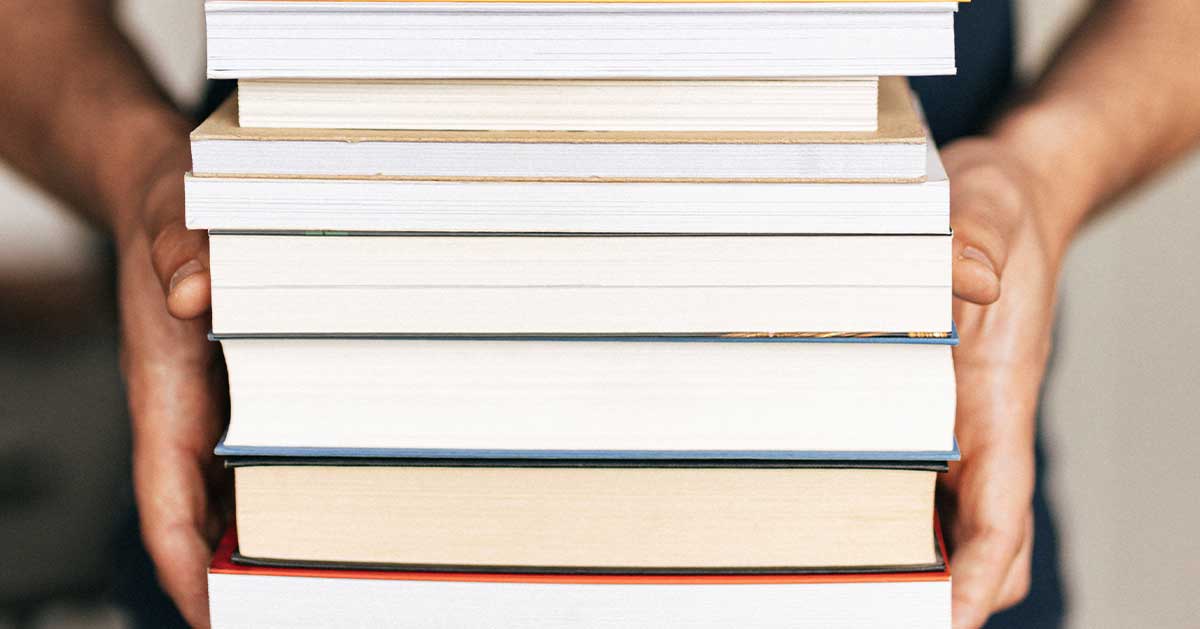
Using time and pressure to fix a warped record works like this:
- Carefully clean the record first
- Put it in it’s protective sleeve
- Lay it on a flat clean surface that’s out of the way and won’t be disturbed for a long time
- Put a large heavy book or other flat heavy items that will cover the entire record on top
- Wait a few days
- Check to see how it’s coming along
- If necessary, repeat the last couple of steps until your satisfied with the results
The problem with this kind of method though, is that it will probably have zero affect on a record that’s badly warped. If that’s the case go to plan B.
The beauty of this passive “low and slow” way of trying to fix a vinyl record warp is that it has the least impact on the actual audio integrity of the record itself.
In other words, the grooves that contain the audio information will not suffer in the same way as other methods.
Over time, and depending on the extent of the warp, the constant pressure should flatten your LP back to its near original state.
It’s also very important to make sure the record is clean to begin with. Otherwise any contaminants can become embedded in the vinyl causing the record to skip, and creating a whole new problem.
Use Pressure and Heat to Flatten the Record
While this method of flattening a warped record takes less time, it is more aggressive and can have unexpected consequences.
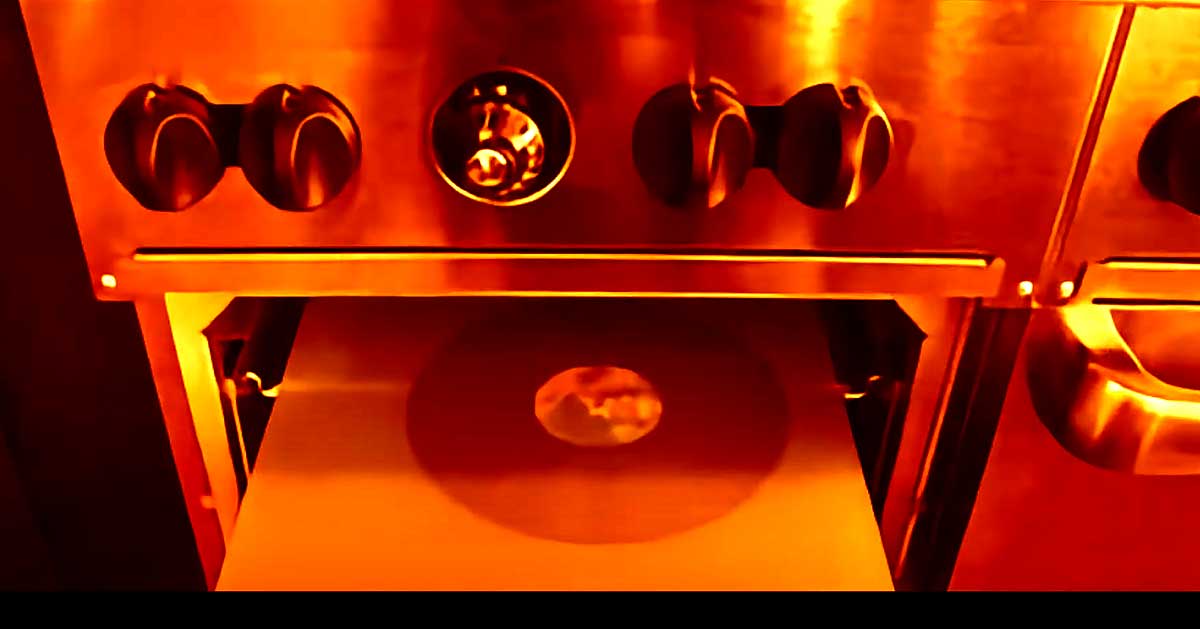
As with using time and pressure without heat, you must still be very patient, and exercise extreme caution combined with good baking skills to get good results.
Note: there are lots of variables here including oven temperature accuracy, vinyl weight, glass thickness and stability.
If you’re willing to give taking a warp out of your record using the oven method, the general steps are as follows:
- Find two large panes of glass that cover the record entirely and fit in your oven
- Preheat the oven to 160 degrees fahrenheit or 70 degrees celsius
- Carefully clean the panes so they’re free of all debris
- Carefully clean the record so it’s also free of all debris
- “Sandwich” the record between the two panes of glass
- Put the “glass and vinyl sandwich” in the oven for 10 minutes
- Remove the sandwich and place it whole on a flat surface
- Place a little extra weight on the top pane of glass
- Let the sandwich cool to room temperature for 1 hour
- Once cooled, check to see if the warp has been flattened
The following video illustrates just how successful this method can be in fixing a warped record:
Be Prepared for the Worst
To be fair, there are tons of articles that can attest to the success or failure of this method, along with a host of comments and warnings directed towards each.
Unless you’re prepared to sacrifice your record forever, it’s not recommended to re-heat the vinyl and try again. The damage is probably permanent.
But we can say one thing for sure, using heat to try to reform a vinyl record has a high probability of producing “groove distortion”.
This distortion can be the resulting crush of the vinyl peaks from too much weight and heat, to tracks that warble because the record is no longer circular.
Since vinyl records are produced or “pressed” using relatively a low temperature, exposure to any significant heat is just a bad idea to begin with. Not to mention the potential for toxic fumes or a plastics fire that you wouldn’t be expecting.
Still, nothing ventured nothing gained. With a little faith and the right approach, straightening a record with heat is totally possible.
2. Use Flattening Machines, Tools or Services
Depending on your sensitivity to your collection, maybe some rare vinyls or a significant number of albums on the whole, having a record flattening tool or machine handy may or may not make sense.
You have to weigh the factors such as additional cost, amount of use and degree of success you’ll expect you’ll get.
As with many specialized devices, record flatteners will have different results with respect to their price points. The ones that work best can be very expensive requiring a serious investment.
High End Record Flattening Tools
For example, the Orb Disc Flattener. This is the device professional record flattening services companies would use. Manufactured in Japan, they can cost between $1100 and $2500 USD.

Economical Record Flatteners
More towards the middle range, The Vinyl Flat will run you about $160 without the recommended heater which is another $90.
Does it work? It’s essentially the oven method but very refined. Watch the video and make your own determinations:
Vinyl Weights and Record Clamps
Though not a permanent solution to fixing a warped record, they will help to keep the vinyl flatter on the turntable platter during play.
Perhaps the best part is they are very cost effective:
Viborg LP528G Turntable Stabilizer
Record Flattening Services
If you’re lucky, you can talk with a local record retailer and who might be able to recommend a service that flattens warped records.
The problem though is cost. Because you have to deal with packaging and shipping, the added time and expense have to be worth the effort.
Considering the price of an average record is relatively modest, this sort of service is best suited to those who take their vinyl very seriously.
Having said that, if you’re willing to spend a couple of thousand dollars on a high end turntable, using a reputable record flattening service is probably not an issue.
One such service we can recommend is Originals Vinyl out of San Francisco, California USA. They offer an ultrasonic cleaning and flattening service with new sleeves for a very reasonable $10 fee.
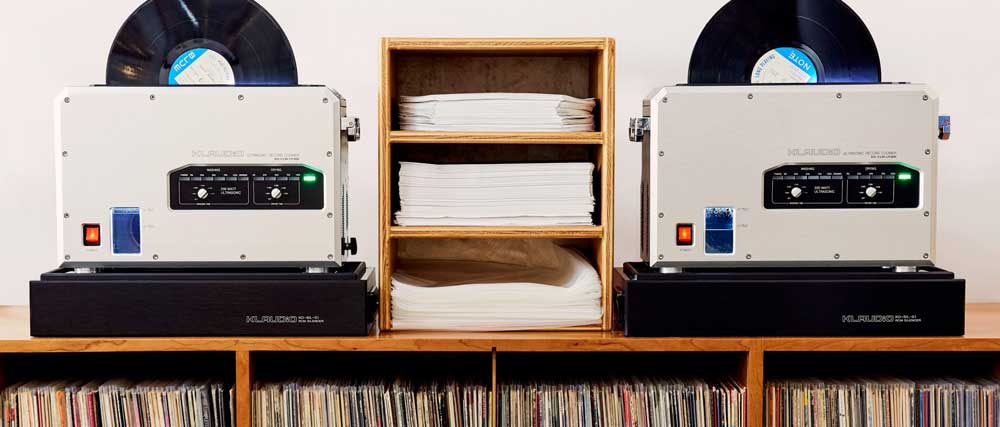
3. Start With Prevention
This may sound like a broken record (cough), but the absolute best way to deal with warped records is through prevention.
When you purchase a new record, or a used record in good condition, it should come out of the jacket and sleeve perfectly flat.
Use Proper Storage and Avoid Stacking
If you want to enjoy your treasured albums indefinitely, they must be stored in a way that keeps them protected from conditions that can distort or damage the vinyl.
Vinyl records are meant to be stored vertically in relatively small batches with support between each 6″ of records.
If you stack them horizontally on a stable flat surface away from a source of heat or direct sunlight, the top few records will be okay.
But, a stack of more than a half dozen or so will continually add increasing pressure to those at the bottom.
The problem is compounded when you consider some of your records will have additional sometimes bulky, materials included. Things like 7-inch bonus records, extra album art books, or creative decorations that impact the evenness of the albums jacket.
Anyone who’s had to move s sizeable record collection understands just how heavy a bunch of vinyl records can be.
The weight of a trusty milk crate, like the one’s found in North America, when filled with our favorite albums, can weigh up to 65 lbs!
The last album in that bunch of leaning audio discs will be shouldering the weight of all the albums before it.
A sturdy, well-made shelving unit that has multiple compartments is an ideal way to store your albums. They provide the perfect balance of divider support and shelf space.
Exercise Protection
Excessive temperatures, hot or cold, and environments with overly high humidity can, over time, leave you with warped records.
Avoid storing or keeping your records near sources of excessive heat such as fireplaces or electric radiators
Other places that are not vinyl friendly include a hot attic, exposure to prolonged direct sunlight (like sunny windows- we may love the sun, but your records don’t), or even leaving your records in a hot vehicle for a while.
Depending on where you live, these effects of these conditions will be more or less. Either way, it doesn’t take long for heat to adversely affect vinyl records.
Excessive Humidity
As mentioned excessive conditions of any kid are unfriendly to vinyl – even humidity.
Basements, unless properly insulated as living spaces, can be overly humid which can, by causing cardboard jackets and paper sleeves to rot, affect your records.
Over time, mould, dirt and debris are sure to build up and take their toll.

Common Questions and More About Warped Records
How to Tell if a Vinyl is Warped
The easiest way to see warping is to put it on your record player, turn the turntable on and observe the record at eye level as it spins.
It’s pretty obvious, a perfectly flat vinyl record will spin with no observable humps or bumps whereas any surface distortion is immediately visible. The degree and amount of warpage is also easy to see.
Is it OK to play slightly warped records?
It’s perfectly ok and safe to play slightly warped records. Though they may have no drastic effect on the needle, the record itself might sound a little off pitch.
In other words, the pitch of the music may shift a little sounding like it speeds up or slows down in time with the warp.
Will a warped record skip?
If the warp is severe enough, yes, it will skip. If the record is extremely warped, the stylus might skip or jump as it passes over the warp thereby damaging your record even further.
On highly sensitive systems, the stylus can even skate uncontrollably causing even more damage to the record, the needle and the calibration of the system itself.
How Do Records Get Warped?
Vinyl records warp due to forces like heat, extra weight and direct sunlight.
When exposed to these conditions they tend to soften up, conform to a new shape and remember that shape even after they’ve been moved.
This is why, if you want top protect your investment, it’s important you keep and store your records carefully so that they don’t warp.
At what temperature does vinyl warp?
140°F or 60°C. This is the relatively low temperature at which vinyl softens to the point it can develop a warp.
At 212°F or 100°C vinyl begins to become fluid and starts to melt.
Once the vinyl passes a certain point between these two temperatures, any audio information is lost and cannot be restored – the integrity of the record is essentially destroyed.
Theoretically speaking, you could take the same vinyl mass and have it re-pressed – but who wants to go through that?
What Does a Warped Record Sound Like?
If you really want that warped record sound, this video is for you. Experience just how much torture a record (and vinyl enthusiast) can take before it’s destroyed forever.
It takes a while to get started, but the total destruction is worth it:
What Does My Record Player Sound Warped?
While we normally assume there’s a problem due to the record being warped, it can also be the turntable itself.
Record player belts and mechanical components do wear out causing slippage. When they do, the turntable can develop an inconsistent speed, slowing down and then speeding up.
This resulting sound effect sounds very much like a record warp.

Final Thoughts on How to Fix A Warped Record
Here are the Coles notes on fixing a warped record:
- Do what you need to do to fix the record. In other words, the record will not get any better on its own. If the damage is to the point where you can’t even play it, you have nothing to loose and everything to gain in recovering a playable record.
- Slow and gradual flattening is always a better choice if you want preserve the integrity of the original record. The “low and slow” method will help preserve the groove profile more accurately, but will probably not work on badly warped albums.
- Use the “glass and vinyl sandwich” method if you want to speed up the process. But remember, you’re also increasing the amount of risk.
If the heating method worries you, you can try letting the record sit in direct sunlight between the two panes of glass with a heavy object on top. The amount of time it takes will depend on the amount of light and heat in the sunny spot. - Practice prevention. Store and handle your records in a way that lets them last as long as possible, and provides you with vinyl listening experience that can last a lifetime.


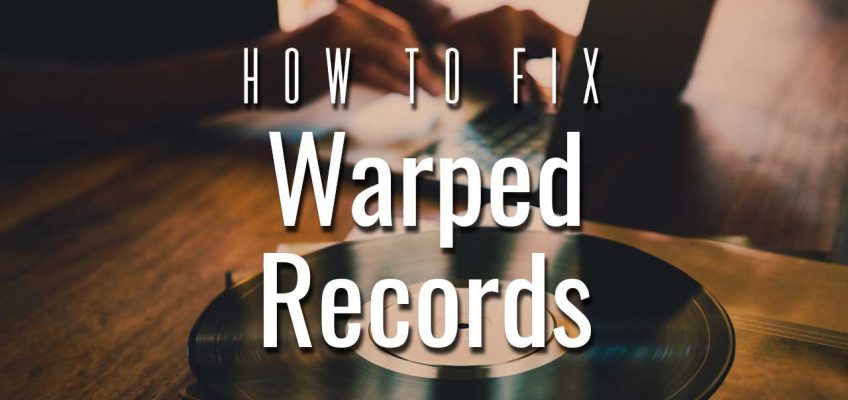
Leave a Reply